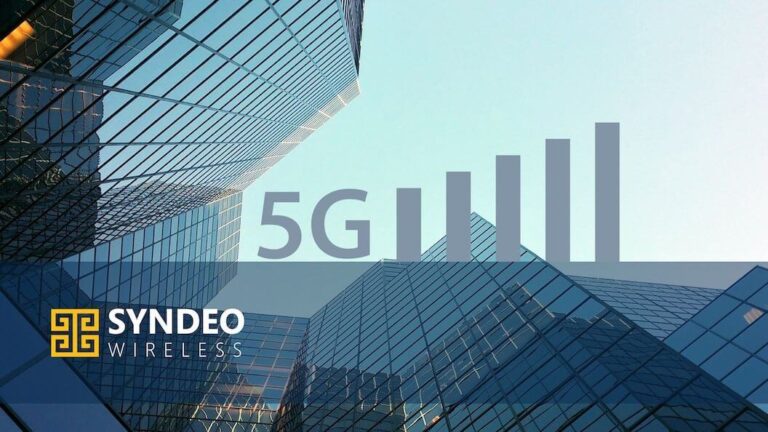Planning for cellular, CBRS, Wi-Fi 7, and IoT now saves millions later
The definition of a smart building is changing—fast. With the rise of 5G, CBRS (Citizens Broadband Radio Service), edge computing, and Wi-Fi 7, real estate developers and property managers are being asked to build not just for today’s needs, but for tomorrow’s tech ecosystems.
And yet, many developments are still being delivered with wireless infrastructure that’s outdated before the first tenant signs a lease.
To meet rising tenant expectations and maximize asset value, future-ready buildings must be designed around flexibility, scalability, and long-term connectivity ROI. That starts with smart planning: investing in the infrastructure backbone that can support multiple generations of wireless technology, including 5G, private cellular networks, and high-speed IoT.
Why 5G and Connectivity Are No Longer Optional
In today’s world, cellular connectivity is as essential as water and electricity. Tenants expect high-speed mobile service in lobbies, elevators, basements, garages, and throughout every floor. Businesses rely on uninterrupted signal for cloud-based applications, video conferencing, smart security, and access control. Even residential tenants are now demanding 5G-grade performance for streaming, gaming, and remote work.
What’s changed is the convergence of technologies like:
- 5G – ultra-low latency, high bandwidth, network slicing
- CBRS – private LTE/5G with enterprise-grade security
- Wi-Fi 6E & Wi-Fi 7 – increased capacity for dense smart devices
- IoT – from HVAC to occupancy sensors and asset tracking
Without a properly designed infrastructure to support these layers, even the most beautiful buildings fall short in functionality.
Core Infrastructure to Consider: The Pillars of Future-Proofing
Scalable Fiber Pathways
Fiber is the lifeline of future connectivity. Every 5G-ready and smart building requires:
- Multiple fiber entry points for redundancy
- Riser conduits that allow for vertical expansion
- Pre-planned cabling pathways for backhaul and fronthaul flexibility
Ensure that your MEP and low-voltage consultants design open, accessible pathways to avoid disruptive retrofits later.
Neutral-Host DAS (Distributed Antenna System)
A neutral-host DAS allows a single in-building cellular system to support multiple wireless carriers simultaneously. This is essential for commercial properties, mixed-use developments, and public spaces where tenants and guests rely on different carriers.
Benefits include:
- Scalable support for 4G, 5G, and future upgrades
- Better signal indoors, in garages, and in elevators
- Compliance with public safety codes (ERRCS, BDA)
Choose DAS systems with flexible architecture and upgradeable radios—this allows for seamless 5G integration and minimizes infrastructure churn.
CBRS and Private Networks
CBRS enables property owners to create private LTE/5G networks with localized control, higher security, and less interference. It’s particularly valuable in:
- Office buildings
- Industrial or logistics hubs
- Healthcare facilities
- Residential communities with smart amenity integrations
Plan ahead by provisioning rooftop space, small cell mounts, and core networking infrastructure to support CBRS when your property is ready.
Wi-Fi 6E and Wi-Fi 7 Readiness
The next evolution of Wi-Fi offers higher bandwidth, lower latency, and less congestion—perfect for smart devices, streaming, and IoT-heavy environments.
Smart buildings should:
- Install access points with upward compatibility
- Use managed networks with VLAN support
- Segment guest, tenant, and operational traffic for security
Design with Flexibility in Mind
One of the most costly mistakes developers make is overcommitting to a single technology path or vendor. Instead, build a connectivity infrastructure that’s open, adaptable, and modular. This includes:
- Equipment rooms with adequate space and power for edge hardware
- Rooftop access for carrier antennas and future 5G small cells
- Backhaul connectivity options that support multi-gig speeds
- Cloud-based network monitoring systems that scale across portfolios
Remember: the tech you install today should never limit what’s possible tomorrow.
The ROI of Future-Readiness
Upgrading infrastructure post-construction is disruptive and expensive. A retrofit DAS installation alone can cost 2–3x more than a system integrated during construction. Worse, buildings without strong wireless performance are prone to:
- Slower lease-up
- Higher tenant churn
- Missed opportunities for ESG and smart building automation
- Lower asset valuations in competitive markets
By contrast, properties built with connectivity-first principles can command higher rents, support a wider range of tenants (including tech-forward users), and remain competitive through multiple tech cycles.
Conclusion: Build Like the Future Is Already Here
5G isn’t coming—it’s already here. And Wi-Fi 7, private networks, and AI-enabled building systems are close behind.
Future-proofing your building requires more than checking a box for “internet access.” It demands a comprehensive, strategic approach to wireless infrastructure, cellular readiness, and long-term scalability. Whether you’re planning a new development or repositioning an existing asset, investing in a flexible, carrier-grade connectivity backbone is no longer optional—it’s foundational.
The most valuable buildings of tomorrow will be those built to adapt—not just to what’s trending now, but to whatever comes next, powered by Syndeo Wireless.




